Sustainability in Project Management: PM2 versus PRiSMTM
Abstract
1. Introduction
2. Materials and Methods
2.1. Research Methodology
- Philosophy: interpretivism;
- Approach to theory development: deduction;
- Methodological choice: mixed-method simple;
- Strategies: archival research;
- Time horizon: cross-sectional.
- Techniques and procedures: literature review and analysis, as well as interviews.
2.2. Methodological Process
2.2.1. The Occurrence of the Term “Sustainability”
- Sustainable Project Management—The Green Project Management (GPM®) Reference Guide, by GPM® [16];
- Individual Competence Baseline for Project, Programme and Portfolio Management, by International Project Management Association [17];
- A Guide to the Project Management Body of Knowledge—PMBOK® Guide by Project Management Institute [18];
- Managing Successful Projects with PRINCE2® by AXELOS [19];
- PM2 Methodology Guide by PM2 ALLIANCE [20].
2.2.2. PM2 and PRiSMTM
3. Theoretical Background
3.1. Project Management
3.2. Sustainability
- People—seeks to end poverty and hunger;
- Planet—involves meeting present and future needs while protecting the planet from degradation;
- Prosperity—seeks to ensure that all human beings have prosperous and fulfilling lives;
- Peace—seeks just, peaceful and inclusive societies free from fear and violence;
- Partnership—seeks the means necessary to implement this agenda.
3.3. Sustainability in Project Management
3.4. PM2 and PRiSMTM Methodologies
3.4.1. PM2
- Uses universally accepted PM best practices;
- Has a common vocabulary, which allows the easy communication and application of the concepts;
- Establishes a link to the PM2 Agile and PM2 Project Portfolio Management models;
- Is simple and easy to apply;
- Improves the effectiveness of PM;
- Provides templates and guidelines for the process and artefacts used.
3.4.2. PRiSMTM
4. Results
4.1. The Presence of the Term “Sustainability”
4.1.1. Sustainability in Project Management Guides
4.1.2. Sustainability in Project Management in Scientific Publications
- The junction of the two themes appears in the 1980s, more precisely in the year 1986, with only one publication;
- Between 1985 and 1994, the number of published articles can be considered insignificant;
- An abrupt growth in the number of publications occurred between the years 1999 and 2004;
- The years 2004 and 2005 had more papers that include the theme of sustainability in PM;
- A decreasing trend was identified from 2004 to 2009;
- A gradual rise was noted between 2009 and 2021, with some occasional exceptions.
4.2. Analysis of PM2 and PRiSMTM Methodologies
4.2.1. Analysis Based on Guides
- PRiSMTM—to make the PM process more sustainable;
- PM2—to address the needs of institutions and projects owned/funded by the European Union, although, according to PM2 Alliance (2018) [20], it can be used by any organization and applied to any project or activity. PM2 allows adaptation and customization to effectively address the needs of any project.
4.2.2. Analysis Based on Scientific Publications
4.2.3. Analysis Based on Interviews
5. Discussion
6. Conclusions
Author Contributions
Funding
Institutional Review Board Statement
Informed Consent Statement
Data Availability Statement
Acknowledgments
Conflicts of Interest
Appendix A
| Authors | Title of the Document | Database * | |||
|---|---|---|---|---|---|
| S | W | B | |||
| PM2 | Takagi and Varajão (2019) [72] | Integration of success management into project management guides and methodologies—Position paper | ✓ | ✓ | ✓ |
| Pantouvakis (2017) [75] | How can IPMA contribute to new PM2 EU commission standard? | ✓ | ✓ | ✓ | |
| Moya-Colorado et al. (2021) [76] | The role of donor agencies in promoting standardized project management in the Spanish development non-government organizations | ✓ | ✓ | ✓ | |
| Ribeiro-Lopes et al. (2022) [79] | Application of the PM2 Methodology in the Project Management of the Portuguese Project Management Observatory Creation—Initiating Phase | ✓ | ✓ | ||
| Takagi and Varajão (2020) [74] | Success management in information systems projects—Work-in-progress | ✓ | ✓ | ||
| Takagi et al. (2019) [73] | Integrating success management into EU PM2 | ✓ | ✓ | ||
| Fiddicke et al. (2021) [77] | A Phased Approach for preparation and organization of human biomonitoring studies | ✓ | ✓ | ✓ | |
| Katunina and Fomina (2021) [78] | In search of excellence in social entrepreneurship project management: experience and standards of the European Union | ✓ | |||
| PRiSMTM | (Piterska, Kolesnikov, et al., 2018) [88] | Development of the Markovian model for the life cycle of a project’s benefits | ✓ | ✓ | |
| (Turan & Johan, 2016) [81] | Assessing sustainability framework of automotive related industry in the Malaysia context based on GPM P5 standard | ✓ | ✓ | ||
| Piterska, Rudenko, et al. (2018) [90] | Development of the method of formation of the architecture of the innovation program in the system “University -State-Business” | ✓ | |||
| Johan and Turan (2016) [85] | Industrial training approach using GPM P5 Standard for Sustainability in Project Management: A framework for sustainability competencies in the 21st century | ✓ | ✓ | ||
| Turan et al. (2016) [82] | Development of Systematic Sustainability Assessment (SSA) for the Malaysian Industry | ✓ | ✓ | ||
| Johan and Turan, 2016b) [86] | The development of Sustainability Graduate Community (SGC) as a learning pathway for sustainability education—A framework for engineering programmes in Malaysia Technical Universities Network (MTUN) | ✓ | ✓ | ||
| Wan Lanang et al. (2017) [87] | Systematic Assessment Through Mathematical Model for Sustainability Reporting in Malaysia Context | ✓ | ✓ | ||
| (Trzeciak (2021) [91] | Sustainable risk management in it enterprises | ✓ | ✓ | ✓ | |
| Lanang et al. (2018) [89] | Incorporating attitudinal parameter in assessing sustainability of Malaysia manufacturing industry | ✓ | ✓ | ||
| Verba and Ivanov (2015) [80] | Sustainable Development and Project Management: Objectives and Integration Results | ✓ | ✓ | ||
| Salcedo Díaz et al. (2016) [83] | Corporative social responsibility: model of process development for products with base on PRiSM and the p5 strategy | ✓ | ✓ | ||
Appendix B
| Interviewee | Previous PM2 Methodology Masters’ Researcher | CEO of PM2 Alliance—Mr. Nicos Kourounakis |
|---|---|---|
| Questions | How many methodologies did you use before PM2? How did you learn about PM2? Was it only for your thesis or did you know about it before? If it was only for your thesis, was it a university thesis proposal or did you choose to use it yourself? Now I would like you to tell me about your experience of using the PM2 methodology, what the project consisted of, and what it was like for you. What are the main advantages that you have observed regarding the use of the methodology? What are the main disadvantages you found with the use of the methodology? What challenges have arisen or had to be overcome using the methodology? Did you use all the artefacts of the methodology? If not, do you consider that some are not important or were not relevant to your project in particular? One disadvantage presented by the authors relates to success management. The PM2 methodology identifies success factors in the initiation phase and defines the criteria for evaluating project success in the planning phase. But after this identification and definition stage, PM2 does not provide management activities regarding these artefacts, and there is no monitoring and control throughout the project. Do you think these aspects should be incorporated into the methodology? What do you think is missing in the methodology, and what do you think is important to be there and is not? Or do you think that nothing is missing? Why? Do you think that including sustainability in this methodology would be a topic to think about in the future and provide added value? If yes, why? Do you know the PRiSMTM methodology and the P5™ of the GPM®? Do you think there is anything else that we should talk about regarding this methodology or another topic that we have not talked about yet? | After performing a literature review, it was found that sustainability is absent in almost all of the PM methodologies. Do you consider sustainability a relevant issue to be considered in PM? Do you consider that incorporating sustainability into the next version of the PM2 methodology would add value? If yes, how? Are you familiar with the GPM® P5™? Do you think that it could be used to complement the PM2 methodology? One of the disadvantages raised by some authors [72,73,74] is related to success management. The PM2 methodology identifies the success factors in the initiation phase (in the Project Initiation Request and the Business Case) and defines the project success evaluation criteria in the planning phase, which are included in the Project Handbook. However, after this identification and definition, PM2 does not provide management activities regarding these artefacts, as there is no monitoring and control throughout the project. Why were these activities not considered? Do you consider that it could be a topic to think about in the next version? As a solution to the above issue, Takagi and Varajão (2019) [72] proposed a success management process integrated into the PM2 methodology. This integrative model aimed to increase the robustness of success management and integrate the management of success criteria and factors into the planning, execution, closure, monitoring and control phases. What do you think about it? Another disadvantage raised, by some authors [79], is related to the lack of clarity and difficulty in understanding the explanation of the artefacts, even with guidance. As a solution, the authors advocate adding a project example that includes all the completed documents. What are your thoughts on this proposal? Do you have anything else that you would like to say about the PM2 methodology that would be useful for research? |
References
- Fonseca, L.; Carvalho, F.; Santos, G. Strategic CSR: Framework for Sustainability through Management Systems Standards—Implementing and Disclosing Sustainable Development Goals and Results. Sustainability 2023, 15, 11904. [Google Scholar] [CrossRef]
- Rosati, F.; Faria, L.G.D. Addressing the SDGs in Sustainability Reports: The Relationship with Institutional Factors. J. Clean. Prod. 2019, 215, 1312–1326. [Google Scholar] [CrossRef]
- Fonseca, L.; Carvalho, F. The Reporting of SDGs by Quality, Environmental, and Occupational Health and Safety-Certified Organizations. Sustainability 2019, 11, 5797. [Google Scholar] [CrossRef]
- Fonseca, L.M.; Domingues, J.P.; Dima, A.M. Mapping the Sustainable Development Goals Relationships. Sustainability 2020, 12, 3359. [Google Scholar] [CrossRef]
- Yin, C.; Zhao, W.; Fu, B.; Meadows, M.E.; Pereira, P. Key Axes of Global Progress towards the Sustainable Development Goals. J. Clean. Prod. 2023, 385, 135767. [Google Scholar] [CrossRef]
- Stanitsas, M.; Kirytopoulos, K.; Leopoulos, V. Integrating Sustainability Indicators into Project Management: The Case of Construction Industry. J. Clean. Prod. 2021, 279, 123774. [Google Scholar] [CrossRef]
- Jensen, A.; Thuesen, C.; Geraldi, J. The Projectification of Everything: Projects as a Human Condition. Proj. Manag. J. 2016, 47, 21–34. [Google Scholar] [CrossRef]
- Vrchota, J.; Řehoř, P.; Maříková, M.; Pech, M. Critical Success Factors of the Project Management in Relation to Industry 4.0 for Sustainability of Projects. Sustainability 2021, 13, 281. [Google Scholar] [CrossRef]
- Silvius, G. Sustainability as a New School of Thought in Project Management. J. Clean. Prod. 2017, 166, 1479–1493. [Google Scholar] [CrossRef]
- Silvius, A.; Schipper, R. Sustainability in Project Management: A Literature Review and Impact Analysis. Soc. Bus. 2014, 4, 63–96. [Google Scholar] [CrossRef]
- Brones, F.; De Carvalho, M.M.; De Senzi Zancul, E. Ecodesign in Project Management: A Missing Link for the Integration of Sustainability in Product Development? J. Clean. Prod. 2014, 80, 106–118. [Google Scholar] [CrossRef]
- Saad, M.H.; Nazzal, M.A.; Darras, B.M. A General Framework for Sustainability Assessment of Manufacturing Processes. Ecol. Indic. 2019, 97, 211–224. [Google Scholar] [CrossRef]
- Saunders, M.; Lewis, P.; Thornhill, A. Research Methods for Business Students, 8th ed.; Pearson: Harlow, UK, 2019; ISBN 978-1292208787. [Google Scholar]
- Page, M.J.; McKenzie, J.E.; Bossuyt, P.M.; Boutron, I.; Hoffmann, T.C.; Mulrow, C.D.; Shamseer, L.; Tetzlaff, J.M.; Akl, E.A.; Brennan, S.E.; et al. The PRISMA 2020 Statement: An Updated Guideline for Reporting Systematic Reviews. Syst. Rev. 2021, 10, 89. [Google Scholar] [CrossRef]
- Laursen, M.; Svejvig, P. Taking Stock of Project Value Creation: A Structured Literature Review with Future Directions for Research and Practice. Int. J. Proj. Manag. 2016, 34, 736–747. [Google Scholar] [CrossRef]
- Carboni, J.; Duncan, W.; Gonzalez, M.; Milsom, P.; Young, M. Sustainable Project Management—The GPM Reference Guide, 2nd ed.; GPM Global: Novi, MI, USA, 2018. [Google Scholar]
- IPMA. ICB4—Individual Competence Baseline for Project, Programme & Portfolio Management, Version 4.0; International Project Management Association: Nijkerk, The Netherlands, 2015. [Google Scholar]
- PMI. PMBOK Guide—Seventh Edition; Project Management Institute, Inc.: Newton Square, PA, USA, 2021; ISBN 9781628256642. [Google Scholar]
- AXELOS. Managing Successful Projects with PRINCE2®, 6th ed.; TSO (The Stationery Office): Belfast, UK, 2017. [Google Scholar]
- PM2 ALLIANCE. Metodologia de Gestão de Projetos—Guide 3.0; PM2 Alliance: Luxembourg, 2018. [Google Scholar]
- Pais Ribeiro, J.L. Research Review and Scientific Evidence. Psicol. Saúde Doença 2014, 15, 671–682. [Google Scholar] [CrossRef]
- Donato, H.; Donato, M. Stages for Undertaking a Systematic Review. Acta Med. Port. 2019, 32, 227–235. [Google Scholar] [CrossRef] [PubMed]
- Furlan, A.D.; Clarke, J.; Esmail, R.; Sinclair, S.; Irvin, E.; Bombardier, C. A Critical Review of Reviews on the Treatment of Chronic Low Back Pain. Spine 2001, 26, E155–E162. [Google Scholar] [CrossRef]
- European Union. Evolution of PM2. 2018. Available online: https://europa.eu/pm2/evolution-pm2_en (accessed on 22 August 2023).
- GPM. GPM Media Release: GPM Releases New P5 Standard for Sustainable Project Management. 2019. Available online: https://greenprojectmanagement.org/news-media/1115-gpm-releases-new-p5-standard-forsustainable-project-management (accessed on 22 August 2023).
- Silva, N.R. Normalização de Publicações Técnicas e/Ou Científicas: Guia Prático Para Docentes, Pesquisadores e Discentes de Cursos Técnicos, Superiores e Pós-Graduação: Atualizado Conforme a Norma ABNT NBR 6023/2018, 1st ed.; Editora Appris: Paraná, Brasil, 2021; ISBN 9786525005188. [Google Scholar]
- Nogueira, A. Metodologia Do Trabalho Científico; Clube de Autores: Lisbon, Portugal, 2015. [Google Scholar]
- Moura, D.L. Pesquisa Qualitativa: Um Guia Prático Para Pesquisadores Iniciantes, 1st ed.; Editora CRV: Curitiba, Brasil, 2021; ISBN 9786558686118. [Google Scholar]
- Kerzner, H. Project Management: A Systems Approach to Planning, Scheduling, and Controlling, 12th ed.; Wiley: Hoboken, NJ, USA, 2017; ISBN 978-1119165354. [Google Scholar]
- Tuman, G.J. Development and Implementation of Effective Project Management Information and Control Systems. In Project Management Handbook; Van Nostrand Reinhold: New York, NY, USA, 1983; pp. 495–532. [Google Scholar]
- APM. APM Body of Knowledge, 6th ed.; Association for Project Management: Reino Unido, UK, 2012; ISBN 978-1-903494-82-0. [Google Scholar]
- Munns, A.K.; Bjeirmi, B.F. The Role of Project Management in Achieving Project Success. Int. J. Proj. Manag. 1996, 14, 81–87. [Google Scholar] [CrossRef]
- Wagner, R. Projectification and Its Impact on Societal Development in Germany. PM World J. 2020, 2330–4480. [Google Scholar]
- Midler, C. “Projectification” of the Firm: The Renault Case. Scand. J. Manag. 1995, 11, 363–375. [Google Scholar] [CrossRef]
- Bourne, M.; Bosch-Rekveldt, M.; Pesämaa, O. Moving Goals and Governance in Megaprojects. Int. J. Proj. Manag. 2023, 41, 102486. [Google Scholar] [CrossRef]
- Sachs, J.D. The Age of Sustainable Development. In The Age of Sustainable Development; Columbia University Press: New York, NY, USA, 2015; ISBN 0231173148. [Google Scholar]
- WCED. Our Common Future, 1st ed.; Oxford University Press: Oxford, UK, 1987; ISBN 019282080X. [Google Scholar]
- Starik, M.; Rands, G.P. Weaving an Integrated Web: Multilevel and Multisystem Perspectives of Ecologically Sustainable Organizations. Acad. Manag. Rev. 1995, 20, 908–935. [Google Scholar] [CrossRef]
- Hart, S.L. A Natural-Resource-Based View of the Firm. Acad. Manag. Rev. 1995, 20, 986. [Google Scholar] [CrossRef]
- Gimenez, C.; Sierra, V.; Rodon, J. Sustainable Operations: Their Impact on the Triple Bottom Line. Int. J. Prod. Econ. 2012, 140, 149–159. [Google Scholar] [CrossRef]
- Elkington, J. Cannibals with Forks: The Triple Bottom Line of 21st Century Business; New Society Publishers: Gabriola Island, BC, Canada; Stony Creek, CT, USA, 1998; ISBN 0865713928 9780865713925. [Google Scholar]
- Dalibozhko, A.; Krakovetskaya, I. Youth Entrepreneurial Projects for the Sustainable Development of Global Community: Evidence from Enactus Program. SHS Web Conf. 2018, 57, 1009. [Google Scholar] [CrossRef]
- Schieg, M. The Model of Corporate Social Responsibility in Project Management. Verslas Teor. Ir Prakt. 2009, 10, 315–321. [Google Scholar] [CrossRef]
- UNCSD. Indicators of Sustainable Development: Guidelines and Methodologies; United Nations: New York, NY, USA, 2001. [Google Scholar]
- Gladwin, T.N.; Kennelly, J.J.; Krause, T.-S. Shifting Paradigms for Sustainable Development: Implications for Management Theory and Research. Acad. Manag. Rev. 1995, 20, 874–907. [Google Scholar] [CrossRef]
- European Commission. Green Paper: Promoting a European Framework for Corporate Social Responsibility; European Commission: Brussels, Belgium, 2001. [Google Scholar]
- Lacy, P.; Cooper, T.; Hayward, R.; Neuberger, L. A New Era of Sustainability; UN Global Compact, Accenture: New York, NY, USA, 2010. [Google Scholar]
- UN. Transforming Our World: The 2030 Agenda for Sustainable Development; United Nations, Department of Economic and Social Affairs: New York, NY, USA, 2015. [Google Scholar]
- GPM. The P5 Standard for Sustainability in Project Management; GPM Global: Novi, MI, USA, 2019; ISBN 9789896540821. [Google Scholar]
- GPM Insights into Sustainable Project Management—Study on the P5TM Standard for Sustainability in Project Management. 2019. Available online: https://greenprojectmanagement.org/2019-insights-into-sustainable-project-management (accessed on 22 August 2023).
- Tsalis, T.A.; Malamateniou, K.E.; Koulouriotis, D.; Nikolaou, I.E. New Challenges for Corporate Sustainability Reporting: United Nations’ 2030 Agenda for Sustainable Development and the Sustainable Development Goals. Corp. Soc. Responsib. Environ. Manag. 2020, 27, 1617–1629. [Google Scholar] [CrossRef]
- Comissão Europeia Pacto Ecológico Europeu. 2022. Available online: https://ec.europa.eu/info/strategy/priorities2019-2024/european-green-deal_pt (accessed on 22 August 2023).
- Carvalho, M.M.; Rabechini, R. Can Project Sustainability Management Impact Project Success? An Empirical Study Applying a Contingent Approach. Int. J. Proj. Manag. 2017, 35, 1120–1132. [Google Scholar] [CrossRef]
- Ivanov, I.; Vlasova, T.; Orlova, L. Project Management Regarded as a Driver of Sustainable Development. E3S Web Conf. 2020, 210, 10005. [Google Scholar] [CrossRef]
- Sneddon, C.; Howarth, R.B.; Norgaard, R.B. Sustainable Development in a Post-Brundtland World. Ecol. Econ. 2006, 57, 253–268. [Google Scholar] [CrossRef]
- Sánchez, M.A. Integrating Sustainability Issues into Project Management. J. Clean. Prod. 2015, 96, 319–330. [Google Scholar] [CrossRef]
- Sabini, L.; Muzio, D.; Alderman, N. 25 Years of ‘Sustainable Projects’. What We Know and What the Literature Says. Int. J. Proj. Manag. 2019, 37, 820–838. [Google Scholar] [CrossRef]
- Huemann, M.; Silvius, G. Projects to Create the Future: Managing Projects Meets Sustainable Development. Int. J. Proj. Manag. 2017, 35, 1066–1070. [Google Scholar] [CrossRef]
- Cole, R.J. Building Environmental Assessment Methods: Redefining Intentions and Roles. Build. Res. Inf. 2005, 33, 455–467. [Google Scholar] [CrossRef]
- Deakin, M.; Huovila, P.; Rao, S.; Sunikka, M.; Vreeker, R. The Assessment of Sustainable Urban Development. Build. Res. Inf. 2002, 30, 95–108. [Google Scholar] [CrossRef]
- Thomson, C.S.; El-Haram, M.A.; Emmanuel, R. Mapping Sustainability Assessment with the Project Life Cycle. Proc. Inst. Civ. Eng. Eng. Sustain. 2011, 164, 143–157. [Google Scholar] [CrossRef]
- Eskerod, P.; Huemann, M. Sustainable Development and Project Stakeholder Management: What Standards Say. Int. J. Manag. Proj. Bus. 2013, 6, 36–50. [Google Scholar] [CrossRef]
- Goedknegt, D.; Silvius, A.J.G. The Implementation of Sustainability Principles in Project Management. In Proceedings of the 26th IPMA World Congress, Crete, Greece, 29 October 2012; pp. 875–882. [Google Scholar]
- Valdes-Vasquez, R.; Klotz, L.E. Social Sustainability Considerations during Planning and Design: Framework of Processes for Construction Projects. J. Constr. Eng. Manag. 2013, 139, 80–89. [Google Scholar] [CrossRef]
- Martens, M.L.; Carvalho, M.M. The Challenge of Introducing Sustainability into Project Management Function: Multiple-Case Studies. J. Clean. Prod. 2016, 117, 29–40. [Google Scholar] [CrossRef]
- Økland, A. Gap Analysis for Incorporating Sustainability in Project Management. Procedia Comput. Sci. 2015, 64, 103–109. [Google Scholar] [CrossRef]
- Sroufe, R. Integration and Organizational Change towards Sustainability. J. Clean. Prod. 2017, 162, 315–329. [Google Scholar] [CrossRef]
- ISO 20400:2017; Sustainable Procurement—Guidance. ISO: Geneva, Switzerland, 2017.
- ISO 37001:2016; Anti-Bribery Management Systems—Requirements with Guidance for Use. ISO: Geneva, Switzerland, 2016.
- ISO 14001:2015; Environmental Management Systems—Requirements with Guidance for Use. ISO: Geneva, Switzerland, 2015.
- GPM Global. PRiSMTM (Projects Integrating Sustainable Methods). Available online: https://greenprojectmanagement.org/prism-methodology (accessed on 22 August 2023).
- Takagi, N.; Varajão, J. Integration of Success Management into Project Management Guides and Methodologies—Position Paper. Procedia Comput. Sci. 2019, 164, 366–372. [Google Scholar] [CrossRef]
- Takagi, N.; Varajão, J.; Ribeiro, P. Integrating Success Management into EU PM2. In Proceedings of the Atas da Conferencia da Associacao Portuguesa de Sistemas de Informacao, Lisboa, Portugal, 11–12 October 2019; Associação Portuguesa de Sistemas de Informação: Guimarães, Portugal, 2019. [Google Scholar]
- Takagi, N.; Varajão, J. Success Management in Information Systems Projects—Work-in-Progress. In Proceedings of the Atas da Conferencia da Associacao Portuguesa de Sistemas de Informacao, Lisbon, Portugal, 11–12 October 2019; Associacao Portuguesa de Sistemas de Informacao: Évora, Portugal, 2020; Volume 2020. [Google Scholar]
- Pantouvakis, J.P. How Can IPMA Contribute to New PM2 EU Commission Standard? In Proceedings of the 12th International Scientific and Technical Conference on Computer Sciences and Information Technologies, CSIT, Lviv, Ukraine, 5–8 September 2017; Institute of Electrical and Electronics Engineers Inc.: New York, NY, USA, 2017; Volume 2, pp. 246–251. [Google Scholar]
- Moya-Colorado, A.; León-Bolaños, N.; Yagüe-Blanco, J.L. The Role of Donor Agencies in Promoting Standardized Project Management in the Spanish Development Non-Government Organizations. Sustainability 2021, 13, 1490. [Google Scholar] [CrossRef]
- Fiddicke, U.; Pack, L.K.; Tolonen, H.; Sepai, O.; López, M.E.; Castaño, A.; Schoeters, G.; Kolossa-Gehring, M. A Phased Approach for Preparation and Organization of Human Biomonitoring Studies. Int. J. Hyg. Environ. Health 2021, 232, 113684. [Google Scholar] [CrossRef] [PubMed]
- Katunina, I.V.; Fomina, Y.A. In Search of Excellence in Social Entrepreneurship Project Management Experience and Standards of the European Union. Strateg. Decis. Risk Manag. 2021, 12, 92–101. [Google Scholar] [CrossRef]
- Ribeiro-Lopes, S.; Tereso, A.; Ferreira, J.L.; Sousa, P.; Engrácia, P. Application of the PM2 Methodology in the Project Management of the Portuguese Project Management Observatory Creation–Initiating Phase. Procedia Comput. Sci. 2022, 196, 816–823. [Google Scholar] [CrossRef]
- Verba, Y.; Ivanov, I. Sustainable Development and Project Management: Objectives and Integration Results. Econ. Soc. Changes Facts Trends Forecast. 2015, 5, 135–146. [Google Scholar] [CrossRef]
- Turan, F.M.; Johan, K. Assessing Sustainability Framework of Automotiverelated Industry in the Malaysia Context Based on GPM P5 Standard. ARPN J. Eng. Appl. Sci. 2016, 11, 7606–7611. [Google Scholar]
- Turan, F.M.; Johan, K.; Lanang, W.N.S.W.; Nor, N.H.M. Development of Systematic Sustainability Assessment (SSA) for the Malaysian Industry. In Proceedings of the IOP Conference Series: Materials Science and Engineering, Melaka, Malaysia, 24–25 November 2016; Volume 160. [Google Scholar]
- Salcedo Díaz, L.; Porto Solano, A.F.; Echeverri Gutiérrez, C.; Boss Agudelo, J.; Moreno Ortiz, C.A. Responsabilidad Social Empresarial: Modelo de Procesos de Desarrollo de Productos Con Base En La Metodología PRiSM y La Estrategia P5. Prod. Más Limpia 2016, 11, 111–125. [Google Scholar] [CrossRef]
- Szabó, L. Sustainability, Creativity and Innovation in Project Management—Model Development for Assessing Organizational Performance through Projects. Vez. Bp. Manag. Rev. 2016, 47, 3–18. [Google Scholar] [CrossRef]
- Johan, K.; Turan, F.M. Industrial Training Approach Using GPM P5 Standard for Sustainability in Project Management: A Framework for Sustainability Competencies in the 21st Century. In Proceedings of the IOP Conference Series: Materials Science and Engineering, Melaka, Malaysia, 24–25 November 2016; Volume 160. [Google Scholar]
- Johan, K.; Turan, F.M. The Development of Sustainability Graduate Community (SGC) as a Learning Pathway for Sustainability Education—A Framework for Engineering Programmes in Malaysia Technical Universities Network (MTUN). In Proceedings of the IOP Conference Series: Materials Science and Engineering, Melaka, Malaysia, 24–25 November 2016; Institute of Physics Publishing: Bristol, UK, 2016; Volume 160. [Google Scholar]
- Wan Lanang, W.N.S.; Turan, F.M.; Johan, K. Systematic Assessment Through Mathematical Model for Sustainability Reporting in Malaysia Context. In Proceedings of the IOP Conference Series: Materials Science and Engineering, Melaka, Malaysia, 6–7 May 2017; Institute of Physics Publishing: Bristol, UK, 2017; Volume 226. [Google Scholar]
- Piterska, V.; Kolesnikov, O.; Lukianov, D.; Kolesnikova, K.; Gogunskii, V.; Olekh, T.; Shakhov, A.; Rudenko, S. Development of the Markovian Model for the Life Cycle of a Project’s Benefits. East. Eur. J. Enterp. Technol. 2018, 5, 30–39. [Google Scholar] [CrossRef][Green Version]
- Lanang, W.N.S.W.; Turan, F.M.; Johan, K. Incorporating Attitudinal Parameter in Assessing Sustainability of Malaysia Manufacturing Industry. In Proceedings of the IOP Conference Series: Materials Science and Engineering, Pekan, Malaysia, 1–2 March 2018; Institute of Physics Publishing: Bristol, UK, 2018; Volume 342. [Google Scholar]
- Piterska, V.; Rudenko, S.; Shakhov, A. Development of the Method of Formation of the Architecture of the Innovation Program in the System “Univers-State-Business". Int. J. Eng. Technol. (UAE) 2018, 7, 232–239. [Google Scholar] [CrossRef]
- Trzeciak, M. Sustainable Risk Management in It Enterprises. Risks 2021, 9, 135. [Google Scholar] [CrossRef]
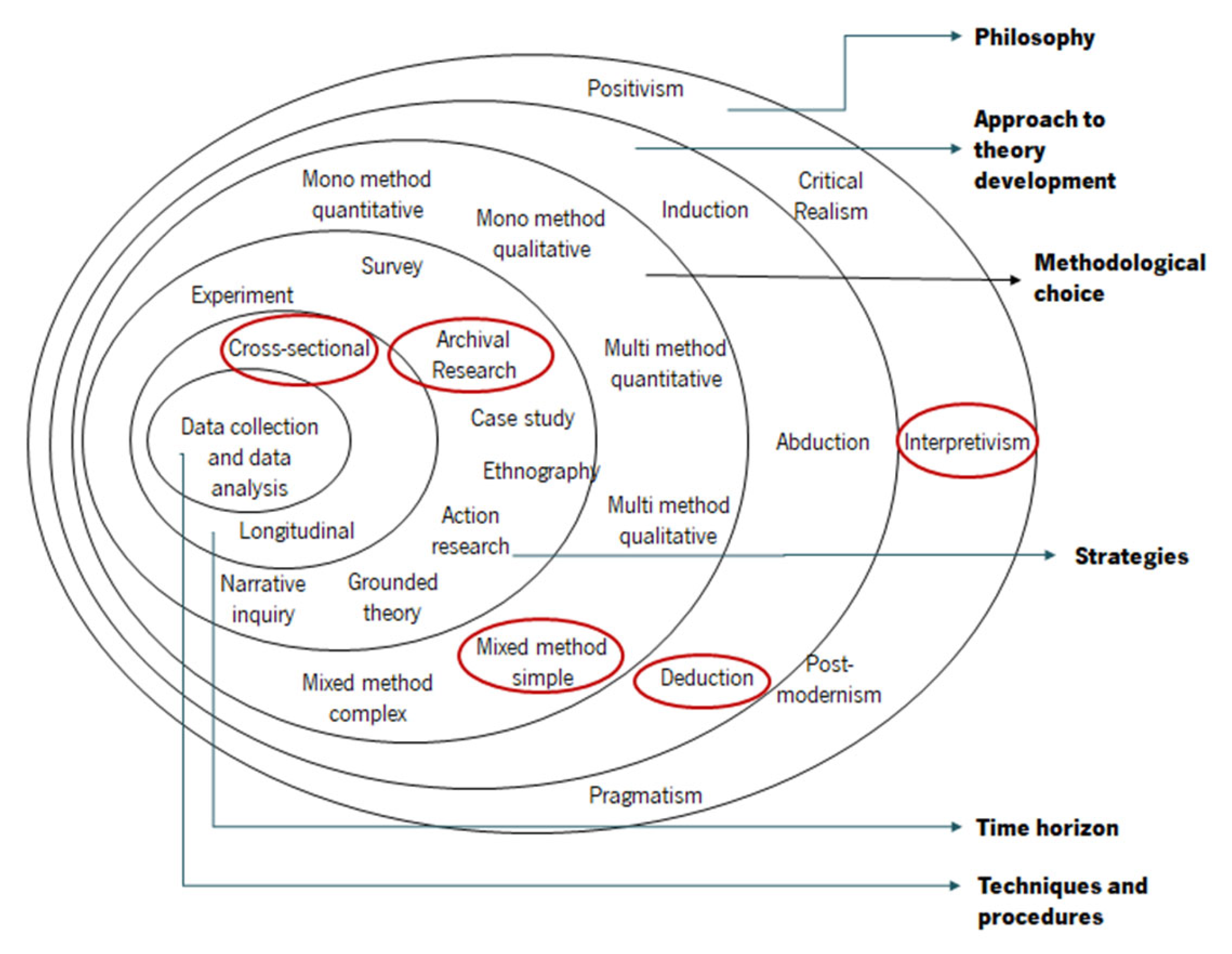


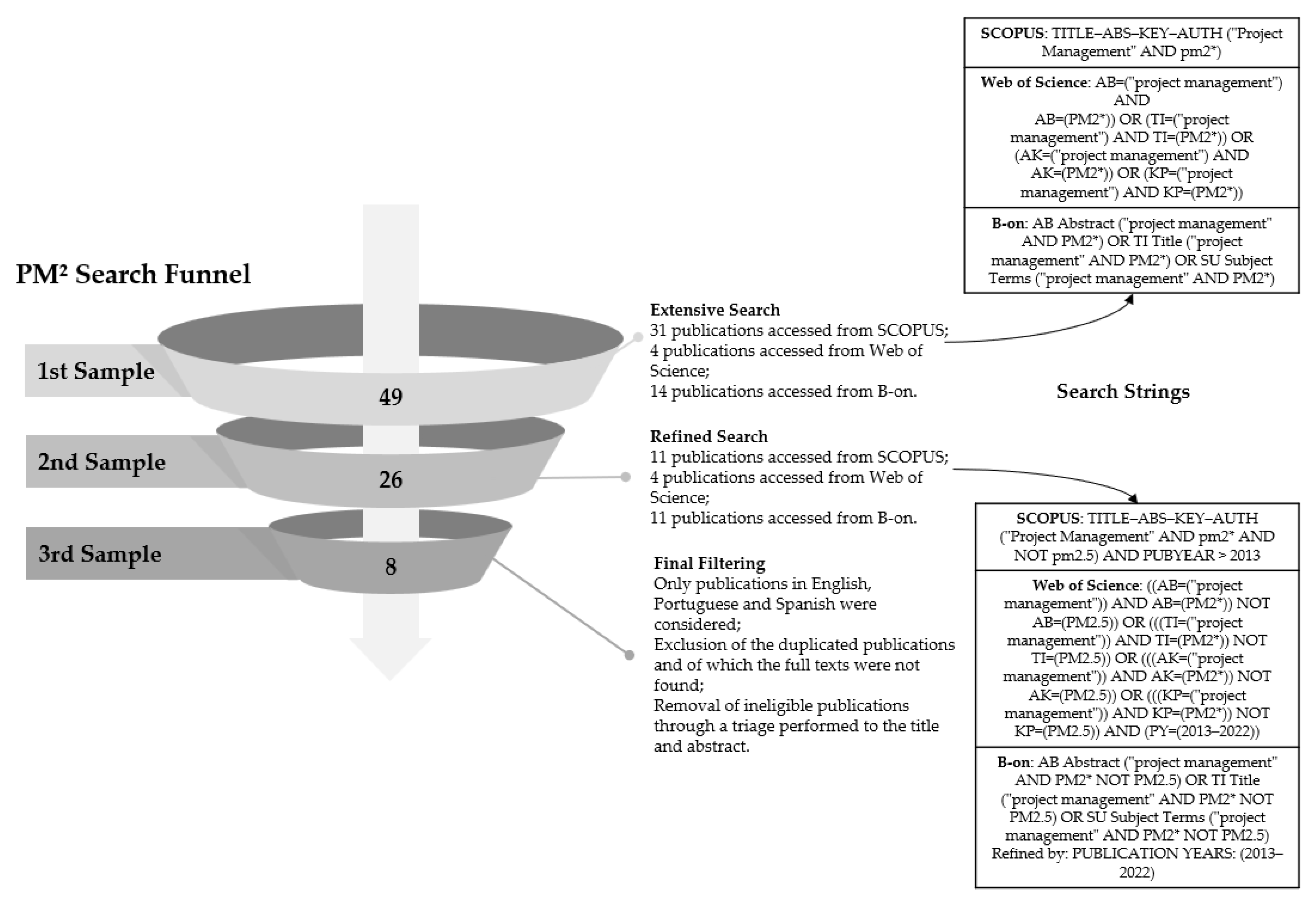

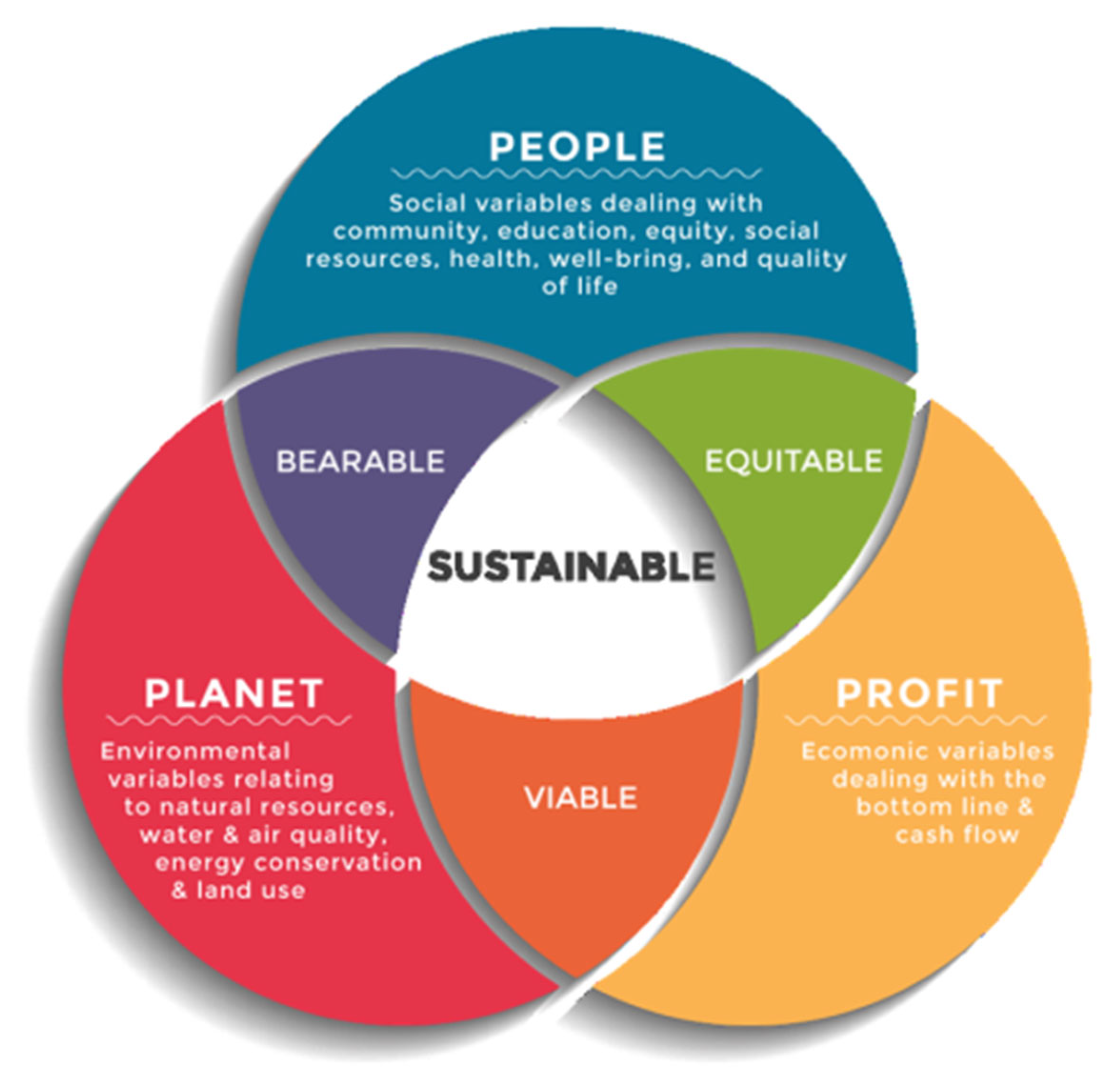
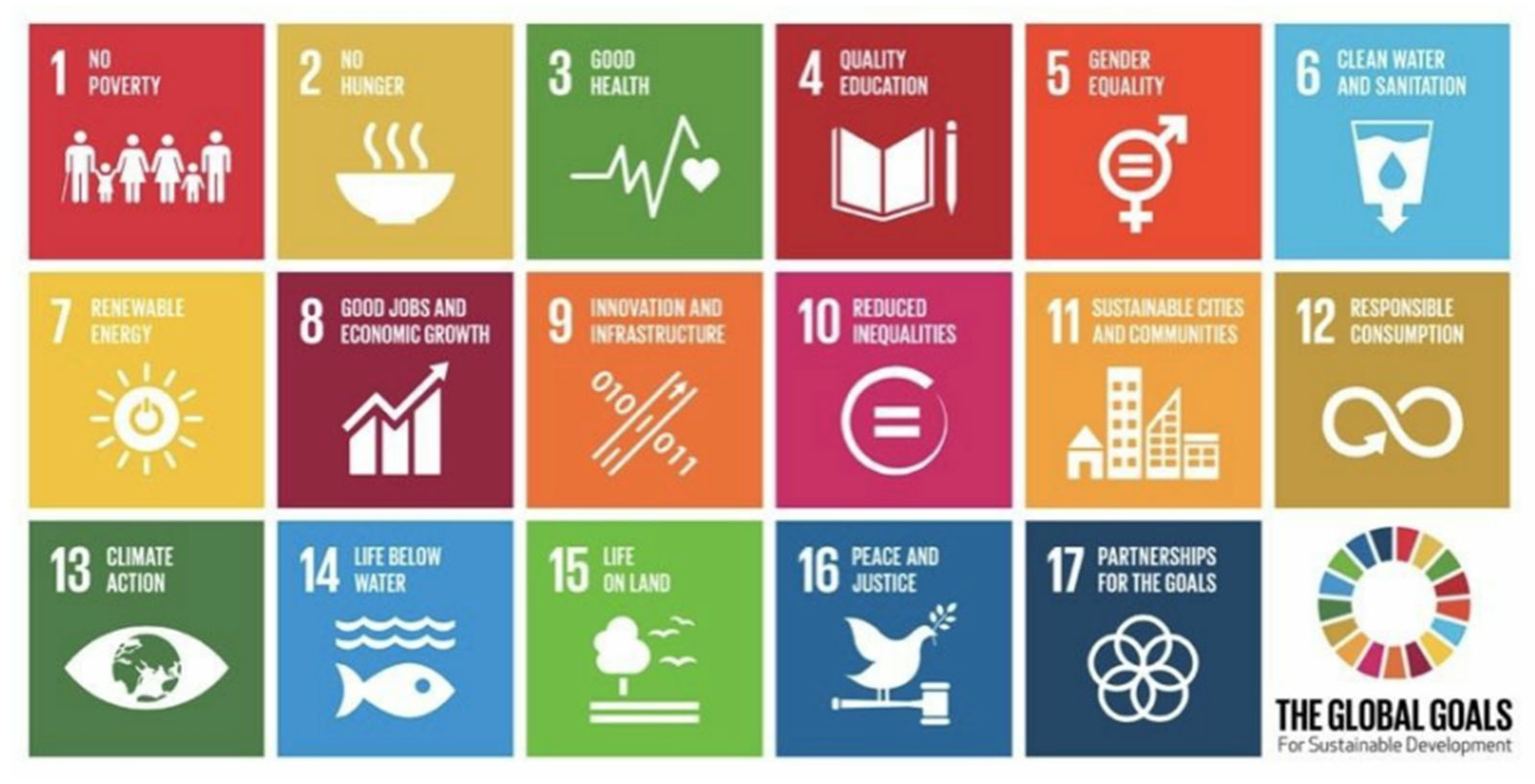


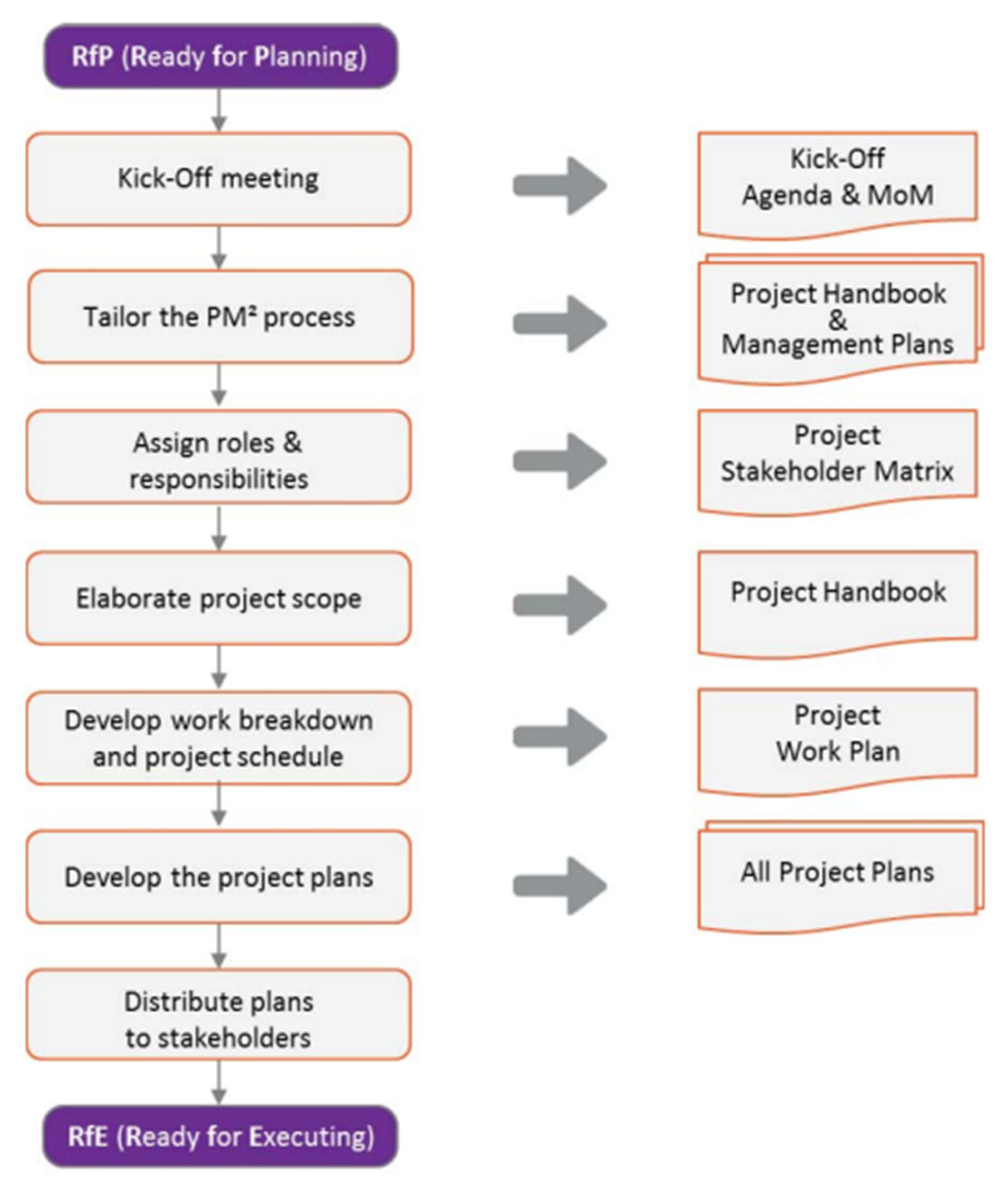



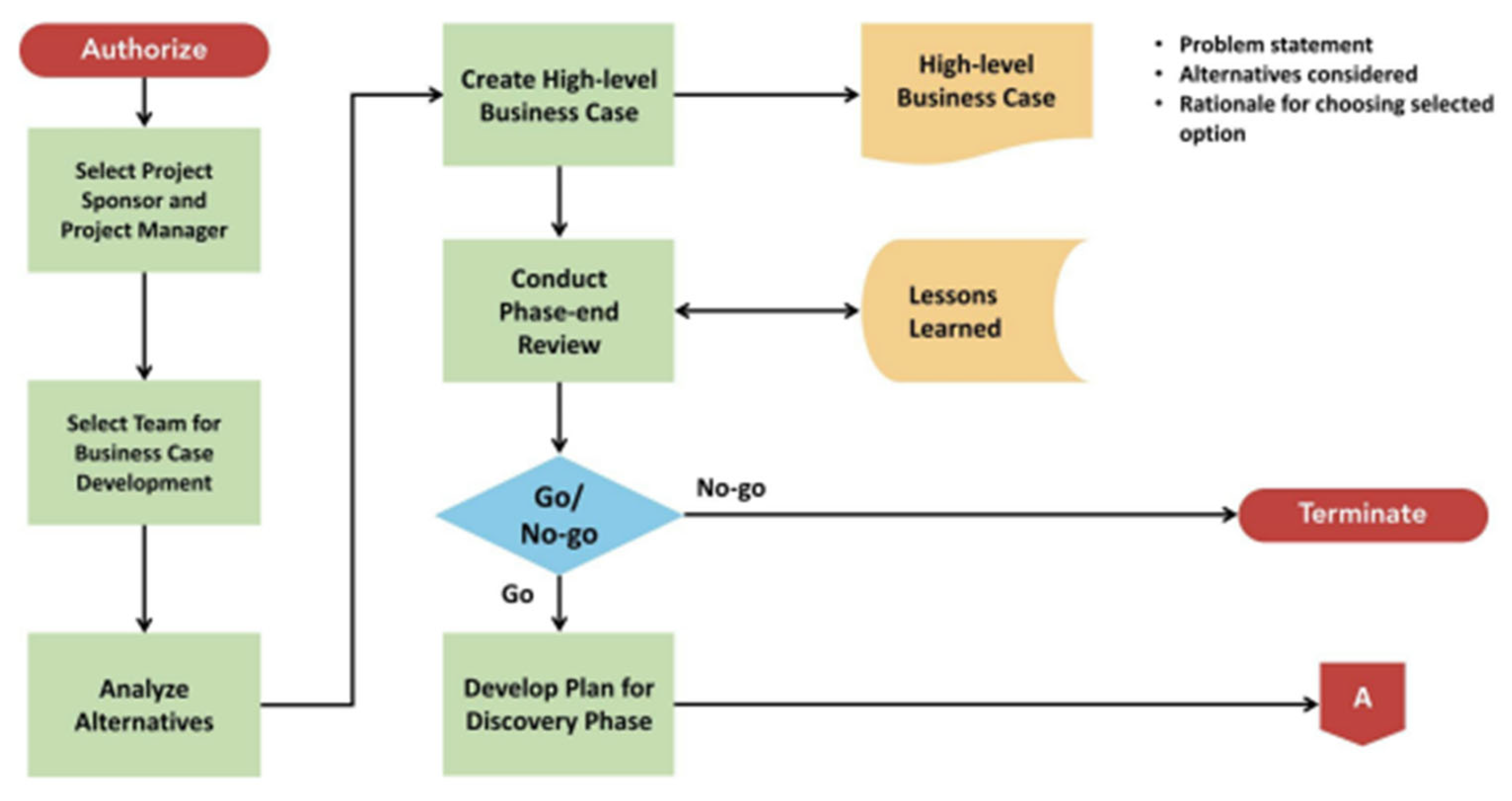
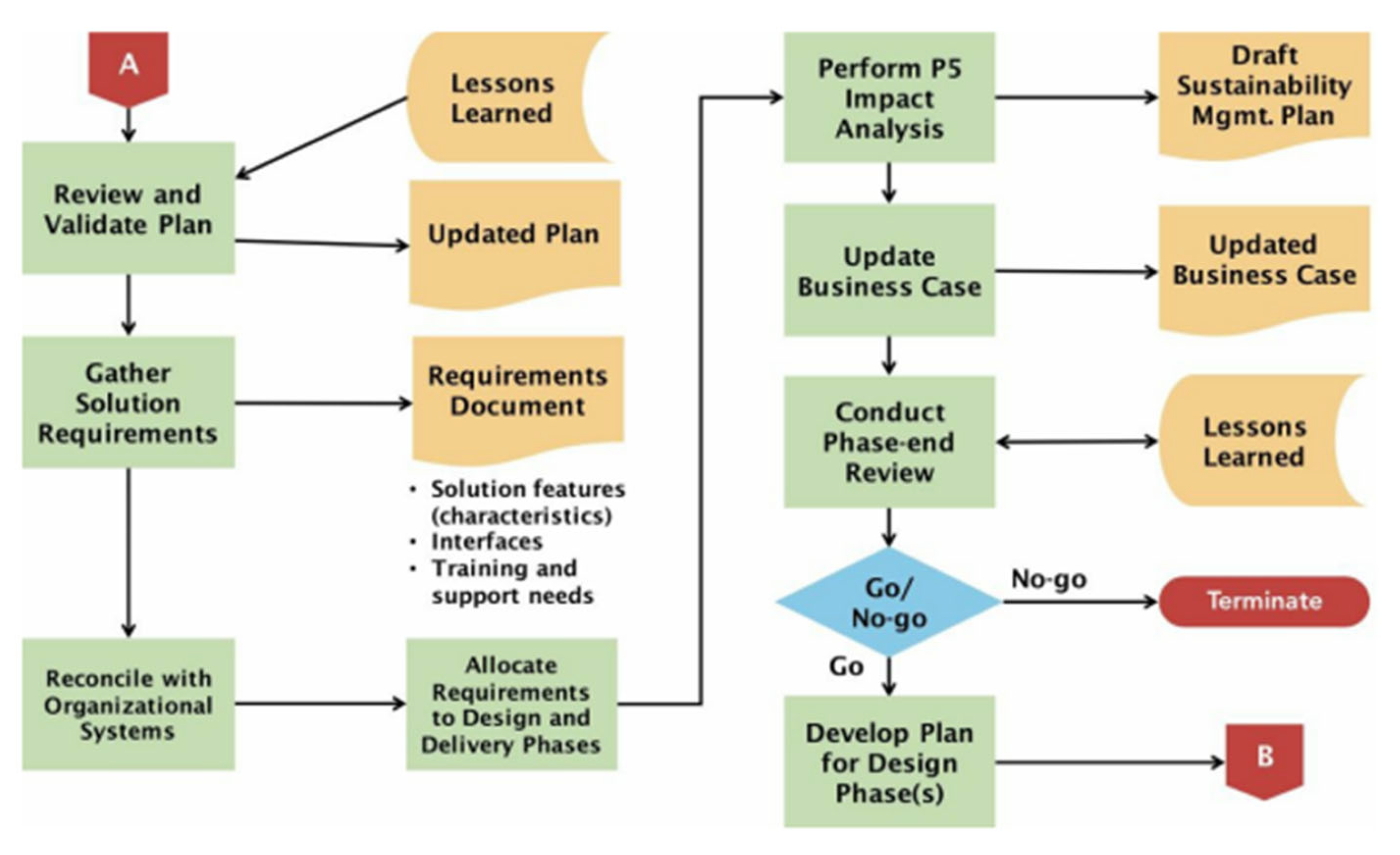



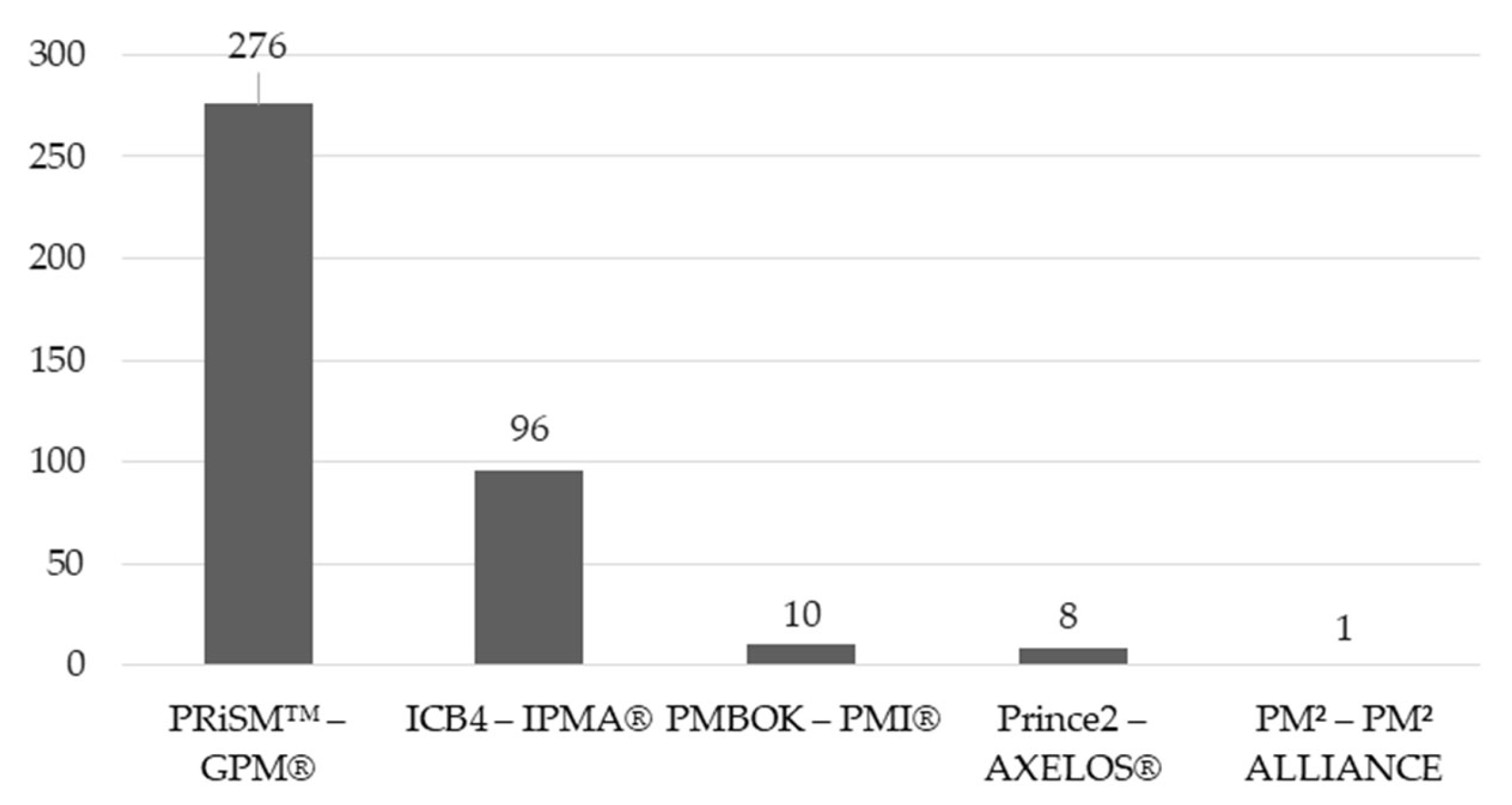

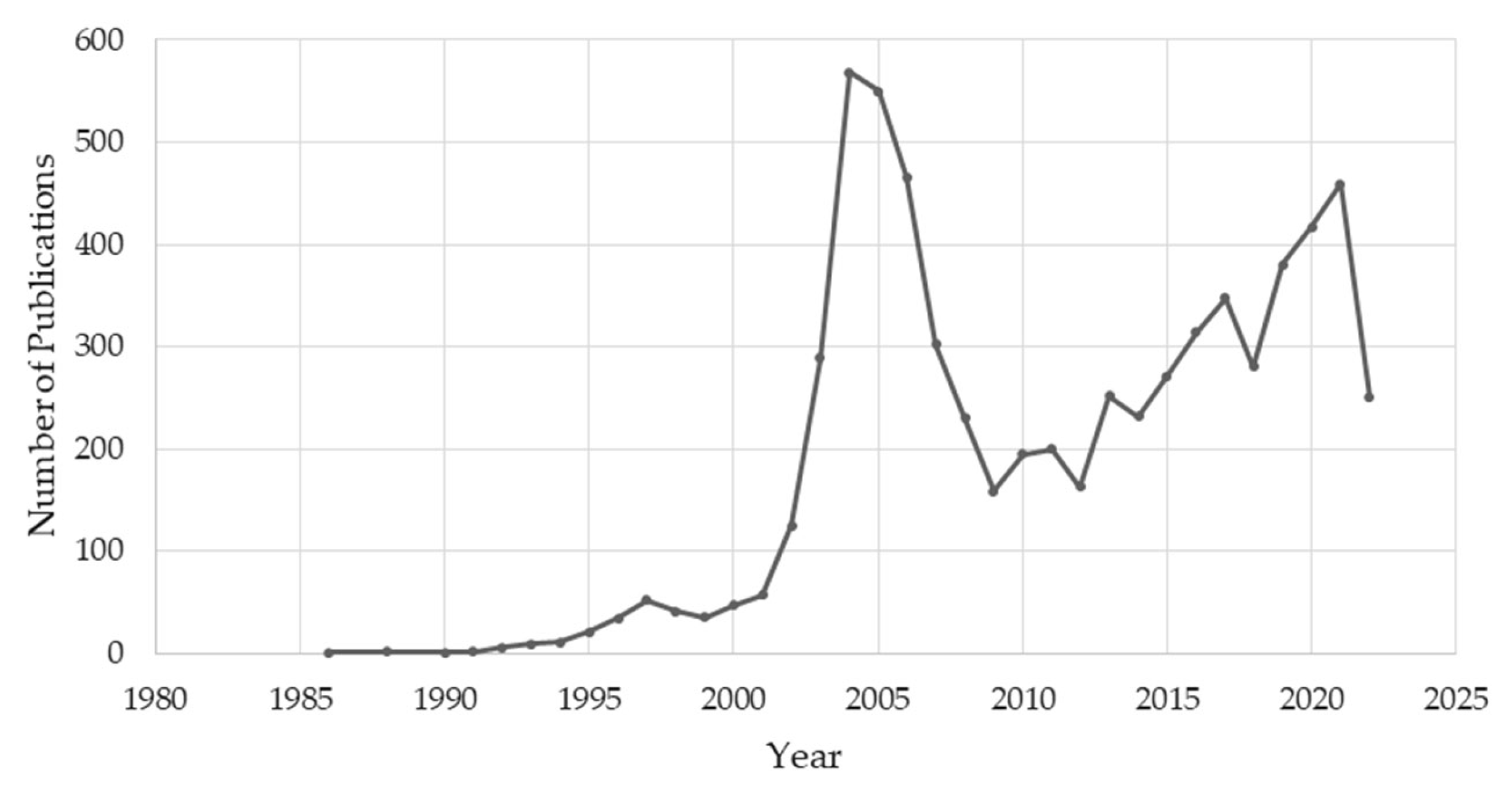
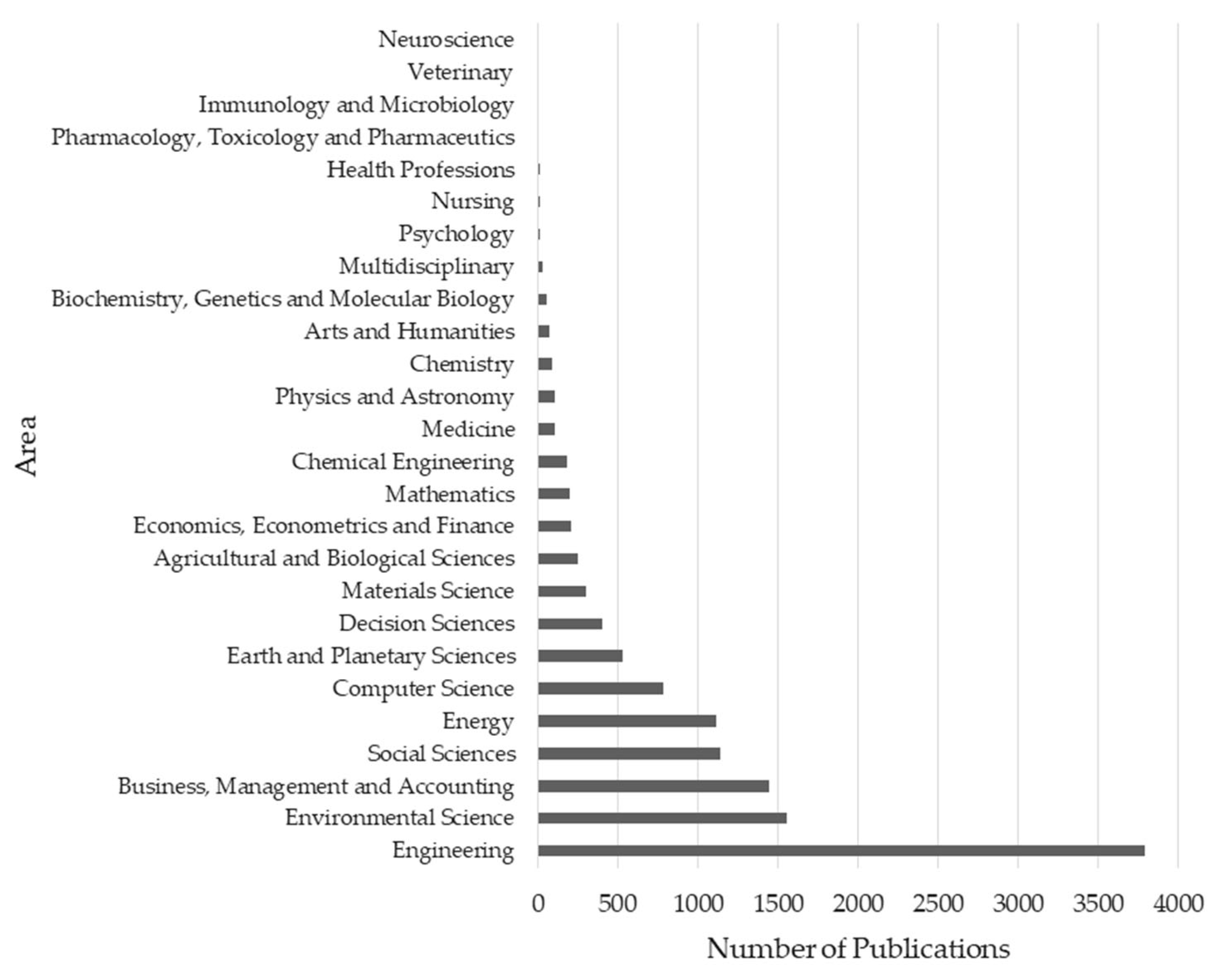

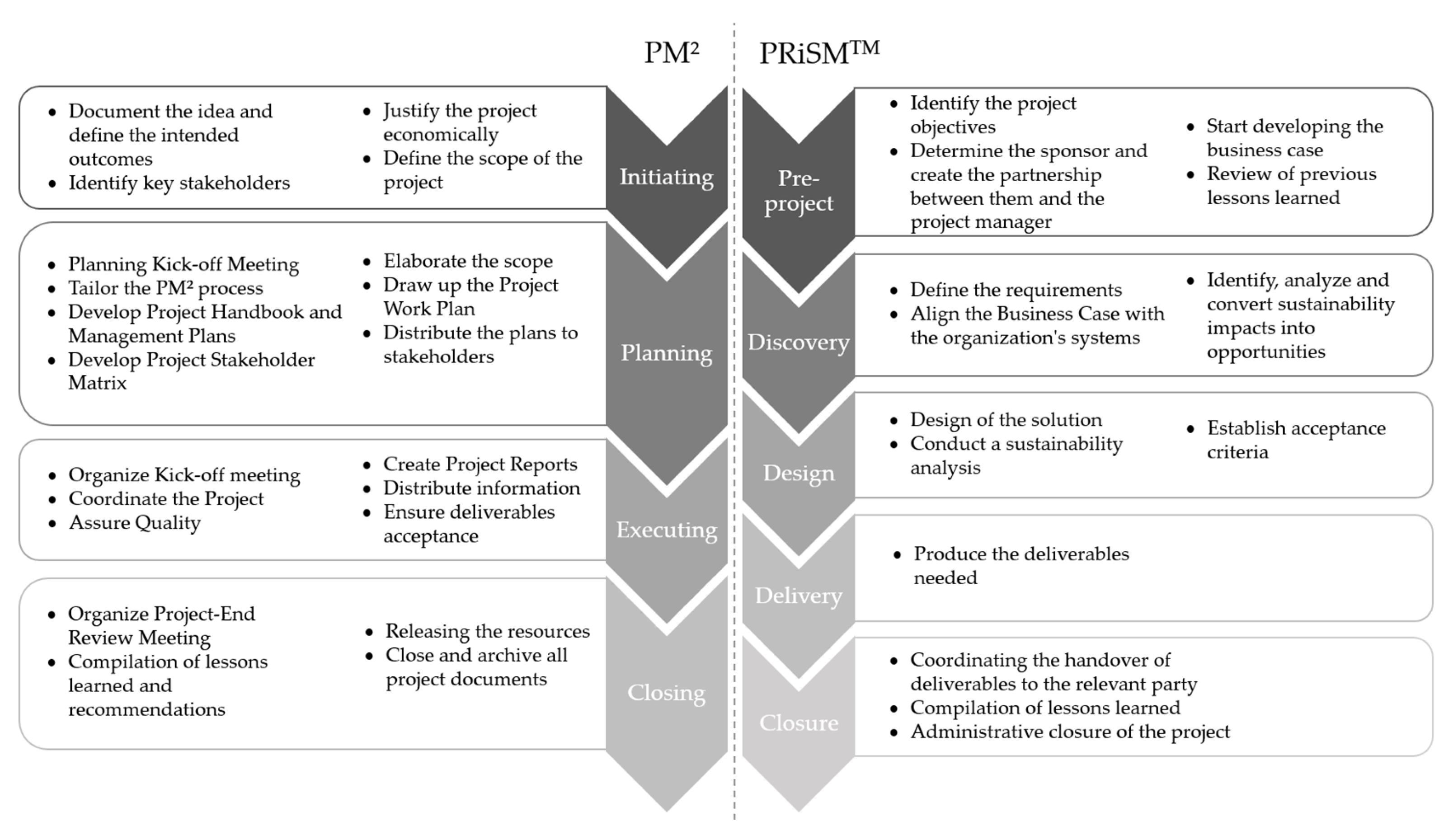

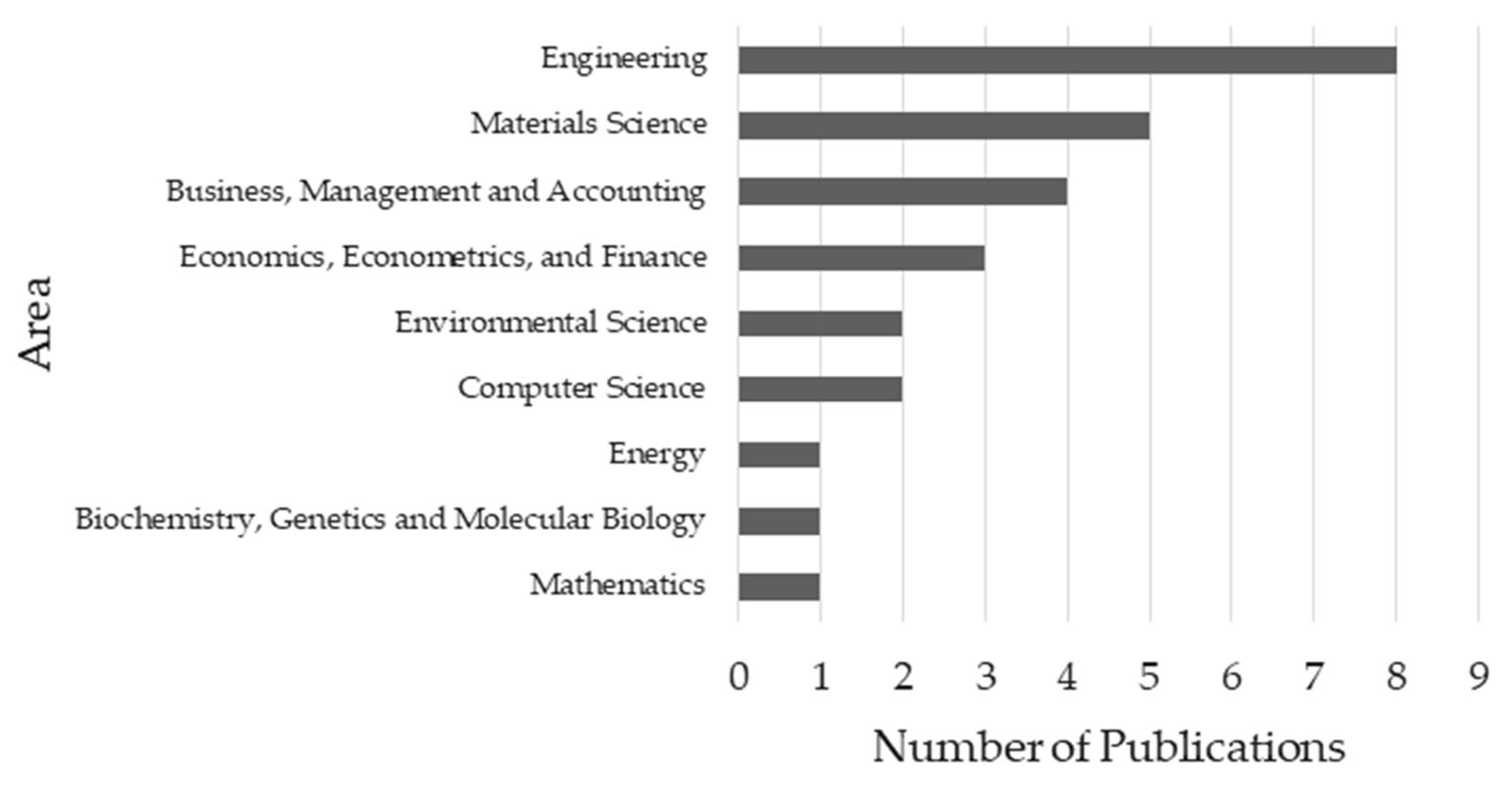

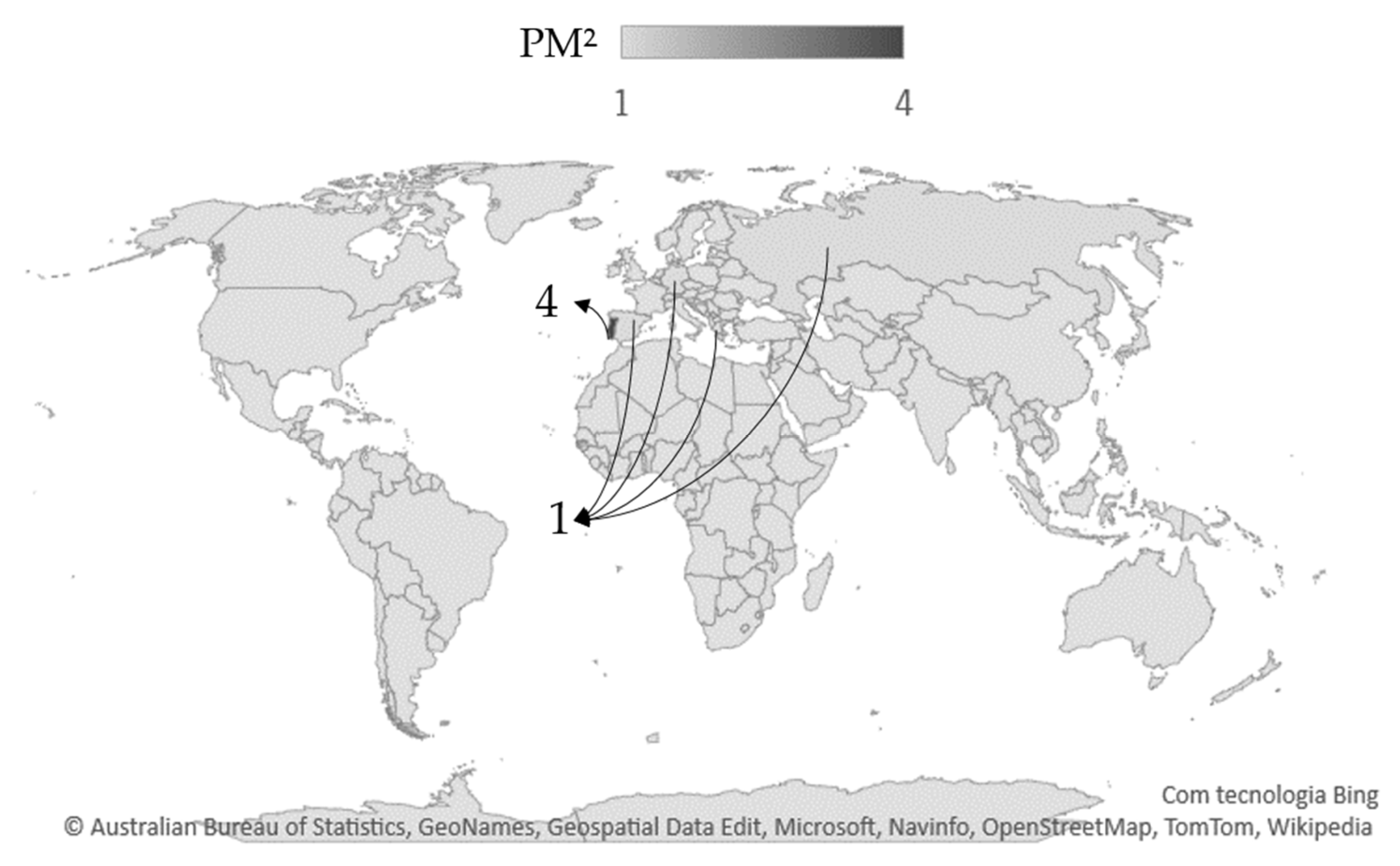

| Concept Definitions | ||
|---|---|---|
| Standard | Project | PM |
| PMI® | “A temporary endeavor undertaken to create a unique product, service, or result” [18] (p. 2). | “The application of knowledge, skills, tools, and techniques to project activities to meet project requirements” [18] (p. 2). |
| AXELOS | “… the means by which we introduce change and, although many of the skills required are the same, there are some crucial differences between managing business as usual and managing project work” [19] (p. 8). | “… planning, delegating, monitoring and control of all aspects of the project, and the motivation of those involved, to achieve the project objectives within the expected performance targets for time, cost, quality, scope, benefits and risk” [19] (p. 9). |
| PM2 ALLIANCE | “… a temporary organisation structure set up to create a unique product or service (output) within certain constraints such as time, cost and quality” [20] (p. 5). | “… activities of planning, securing, monitoring and managing the resources and work necessary to deliver specific project goals and objectives in a effective and efficient way” [20] (p. 7). |
| GPM® | “… an investment that requires a set of coordinated activities performed over a finite period of time in order to accomplish a unique result in support of a desired outcome” [16] (p. 44). | “…application of knowledge, skills, tools, and techniques to coordinate projects effectively and efficiently” [16] (p. 45). |
| APM | “… unique, transient endeavours, undertaken to bring about change and achieve planned objectives, which can be defined in terms of outputs, outcomes or benefits” [31] (p. 12). | “… application of processes, methods, knowledge, skills and experience to achieve specific objectives for change” [31] (p. 214). |
| IPMA® | “unique, temporary, multi-disciplinary and organized endeavor to realise agreed deliverables within predefined requirements and constraints” [17] (p. 36). | “Project management is concerned with the application of methods, tools, techniques and competences to a project to achieve goals” [17] (p. 36). |
| PM2 (PM2 ALLIANCE) | PRiSMTM (GPM®) | |
|---|---|---|
| Project | “A project is a temporary organisational structure set up to create a unique product or service (output) within certain constraints such as time, cost and quality” [20] (p. 5). | “GPM defines a project as “an investment that requires a set of coordinated activities performed over a finite period of time in order to accomplish a unique result in support of a desired outcome” [16] (p. 45). |
| PM | “Project Management can be described as the activities of planning, organising, securing, monitoring and managing the resources and work necessary to deliver specific project goals and objectives in an effective and efficient way” [20] (p. 7). | “Project management is the application of knowledge, skills, tools, and techniques to coordinate projects effectively and efficiently” [16] (p. 46). |
| Methodology | Deliverables | |||
|---|---|---|---|---|
| PM2 | Initiating
| Planning
| Executing
| Closing
|
| Monitor and Control | ||||
|
|
|
| |
| PRiSMTM |
| Management Plans (as required):
| ||
| Author and Year 1 | |||||||||
|---|---|---|---|---|---|---|---|---|---|
| Feature | A 2017 | B 2019 | C 2019 | D 2020 | E 2021 | F 2021 | G 2021 | H 2022 | Total |
| Good “recipe book” | ✓ | 1 | |||||||
| Includes transition management | ✓ | ✓ | 2 | ||||||
| Embracing | ✓ | ✓ | 2 | ||||||
| Simple and easy to implement | ✓ | ✓ | ✓ | 3 | |||||
| Standardized language | ✓ | ✓ | 2 | ||||||
| Best practices from other bodies of knowledge | ✓ | ✓ | ✓ | ✓ | ✓ | ✓ | ✓ | 7 | |
| Customizable | ✓ | 1 | |||||||
| Available online | ✓ | ✓ | ✓ | 3 | |||||
| Free | ✓ | ✓ | ✓ | 3 | |||||
| Shift from traditional design to a holistic view | ✓ | 1 | |||||||
| PM2 Alliance certification is available | ✓ | 1 | |||||||
| Follows a process approach | ✓ | 1 | |||||||
| Describes individual strengths/virtues | ✓ | ✓ | 2 | ||||||
| Description of skills and virtues is limited and fragmented | ✓ | 1 | |||||||
| Offers templates of the artefacts | ✓ | 1 | |||||||
| Artefacts with unclear explanations | ✓ | 1 | |||||||
| Smallest dimension | ✓ | 1 | |||||||
| Includes specific activities to identify success factors and criteria in the initiation and planning stages | ✓ | ✓ | ✓ | 3 | |||||
| Does not clearly address success management in all phases of the project | ✓ | ✓ | ✓ | 3 | |||||
| Lack of scientific papers regarding its use | ✓ | 1 | |||||||
| Author and Year 1 | |||||||||||
|---|---|---|---|---|---|---|---|---|---|---|---|
| Feature | A 2015 | B 2016 | C 2016 | D 2016 | E 2016 | F 2016 | G 2016 | H 2017 | I 2018 | J 2018 | Total |
| Value-oriented methodology | ✓ | 1 | |||||||||
| Principles of “green” management | ✓ | 1 | |||||||||
| P5™ can be developed at any stage of the process | ✓ | 1 | |||||||||
| Set of good practices for companies’ SD | ✓ | 1 | |||||||||
| First PM tool for sustainability analysis | ✓ | 1 | |||||||||
| Guide to implement sustainable objectives | ✓ | 1 | |||||||||
| Combines three basic CSR parameters | ✓ | 1 | |||||||||
| Stepping stone to effective CSR practice | ✓ | 1 | |||||||||
| Comprehensive | ✓ | 1 | |||||||||
| Extension of TBL, considers profit, planet, people, product and process | ✓ | ✓ | ✓ | ✓ | ✓ | 5 | |||||
| Set of good practices for SD | ✓ | 1 | |||||||||
| Increased longevity and profitability | ✓ | 1 | |||||||||
| P5™ can be a training pathway for engineering students | ✓ | ✓ | 2 | ||||||||
| Contains sustainability components at the organizational level | ✓ | 1 | |||||||||
| Creates difficulties in a single-project context | ✓ | 1 | |||||||||
| Representation of life cycle processes only occurs on a qualitative level | ✓ | 1 | |||||||||
| Minimal research in developing countries | ✓ | 1 | |||||||||
| Question Topic | Answer |
|---|---|
| PM2 Advantages | Free; Small size; Well-built methodology; Useful; Valid; Easy to apply; Similar to other guidelines; Allows the customization of the documents; Artefacts are adaptable and adjustable to the project. |
| PM2 Disadvantages | Difficulty in finding training related to the methodology; Confusing initial phase; Lack of follow-up regarding success management during the project; Tools of the final part of the methodology are little explored. |
| PM2 Future Suggestions | Documentation management—moving from Word and Excel documents to a digital platform. |
| PRiSMTM | No knowledge of the GPM®, the P5™ standard and the PRiSMTM methodology. |
| Sustainability | Increased appreciation and importance of sustainability area over time; Sustainability criteria should be more regularly included. |
| Sustainability PM2 | PM2 mentions sustainability for the following reasons:
|
| Question Topic | Answer |
|---|---|
| Sustainability | Important dimension; Needs to be achieved at the organizational and cultural levels; A topic that can be addressed and improved in PM; The methodology cannot specify something in such a narrow way; After the project definition, not much action can be taken to integrate sustainability objectives. |
| PM2 Sustainability | Improvements can be made in this direction; Addresses the broader issue of sustainability; Can be included in the Project Handbook, additional objectives and PM2 mind-sets; PM2 is a generic methodology that tries to have a holistic approach, so environmental sustainability cannot be a dominant dimension. |
| Success Management | Need to define generic ways to measure success, as each project has different objectives. |
| PM2 Success Management | Critical success factors and critical success criteria, besides being addressed in the initiation phase, are integrated into the project objectives; The project team and the project itself have to focus on achieving the four objectives (scope, time, cost and quality); Control and monitoring verify the level of achievement of these objectives; Criteria and activities for measuring success are found in two aspects of PM2: at the end of the project (lessons learned, post-project recommendations and degree of success) and each phase of the project (phase gates and monitoring and control and management activities). |
| Examples to bridge the gap in understanding the explanation of artefacts | An excellent and valuable way to learn; Should be used at organizational and educational/training level. |
| Examples to overcome the difficulty of understanding the explanation of the artefacts in PM2 | PM2 is a generic methodology, which can be used by any organization and type of project, and the examples are quite specific. Thus, inserting examples would make the methodology more complex. |
Disclaimer/Publisher’s Note: The statements, opinions and data contained in all publications are solely those of the individual author(s) and contributor(s) and not of MDPI and/or the editor(s). MDPI and/or the editor(s) disclaim responsibility for any injury to people or property resulting from any ideas, methods, instructions or products referred to in the content. |
© 2023 by the authors. Licensee MDPI, Basel, Switzerland. This article is an open access article distributed under the terms and conditions of the Creative Commons Attribution (CC BY) license (https://creativecommons.org/licenses/by/4.0/).
Share and Cite
Marques, P.; Sousa, P.; Tereso, A. Sustainability in Project Management: PM2 versus PRiSMTM. Sustainability 2023, 15, 15917. https://doi.org/10.3390/su152215917
Marques P, Sousa P, Tereso A. Sustainability in Project Management: PM2 versus PRiSMTM. Sustainability. 2023; 15(22):15917. https://doi.org/10.3390/su152215917
Chicago/Turabian StyleMarques, Patrícia, Paulo Sousa, and Anabela Tereso. 2023. "Sustainability in Project Management: PM2 versus PRiSMTM" Sustainability 15, no. 22: 15917. https://doi.org/10.3390/su152215917
APA StyleMarques, P., Sousa, P., & Tereso, A. (2023). Sustainability in Project Management: PM2 versus PRiSMTM. Sustainability, 15(22), 15917. https://doi.org/10.3390/su152215917







